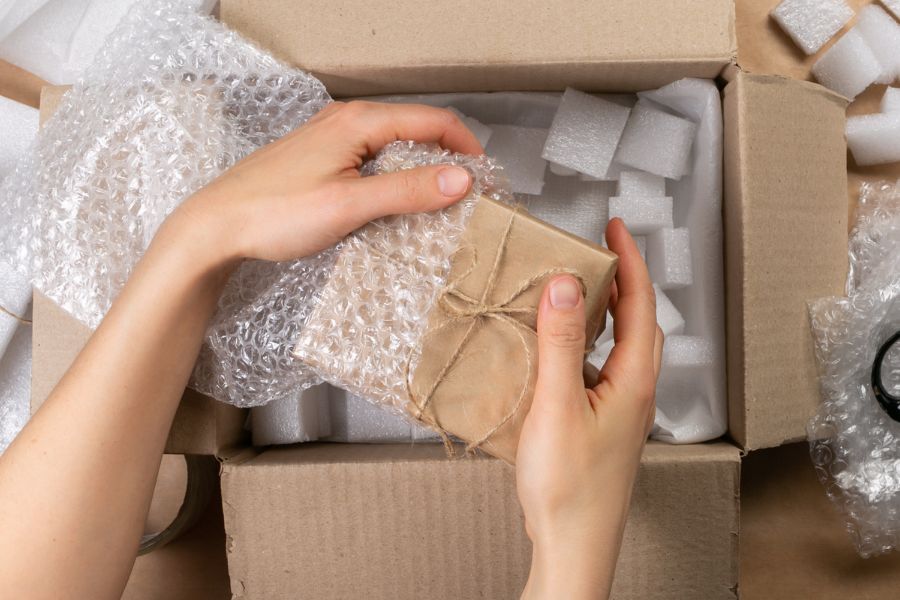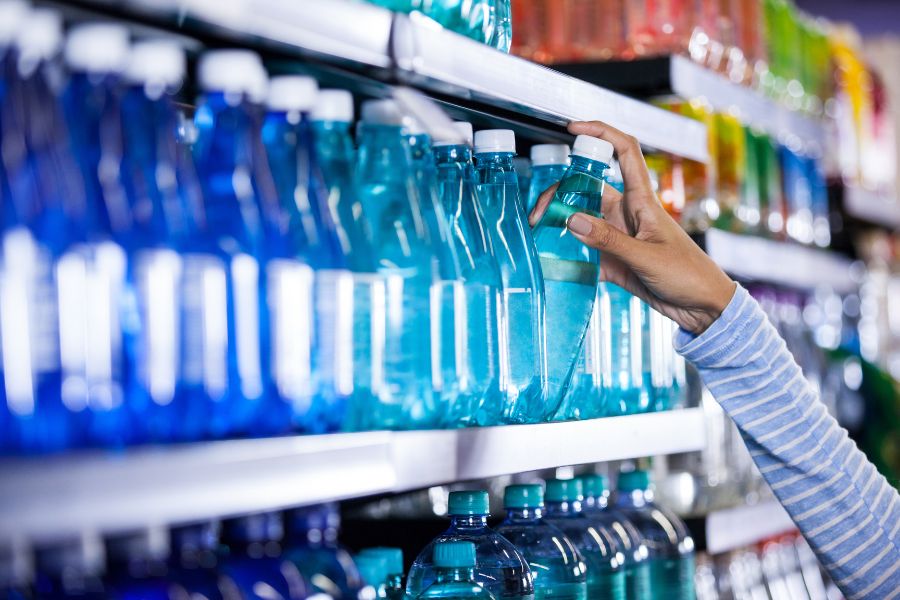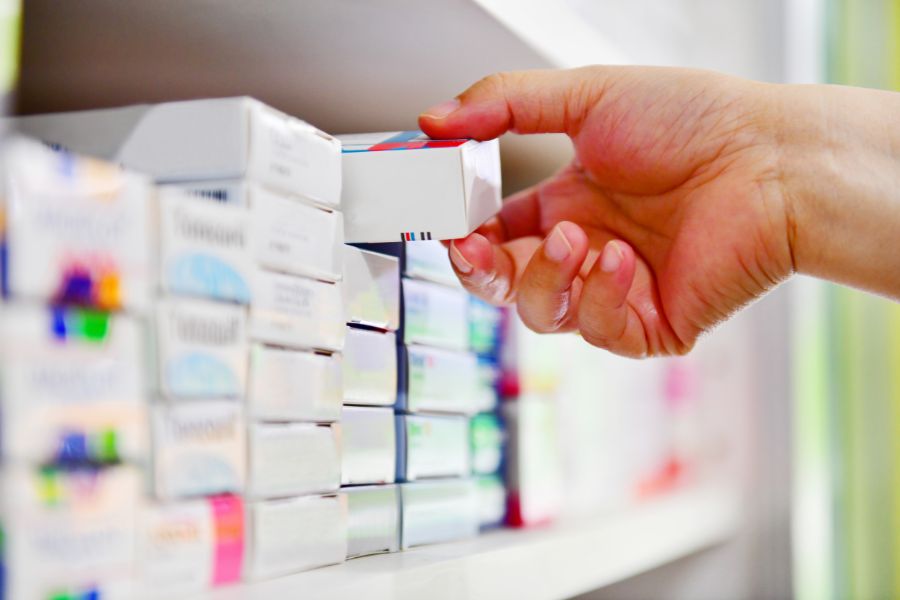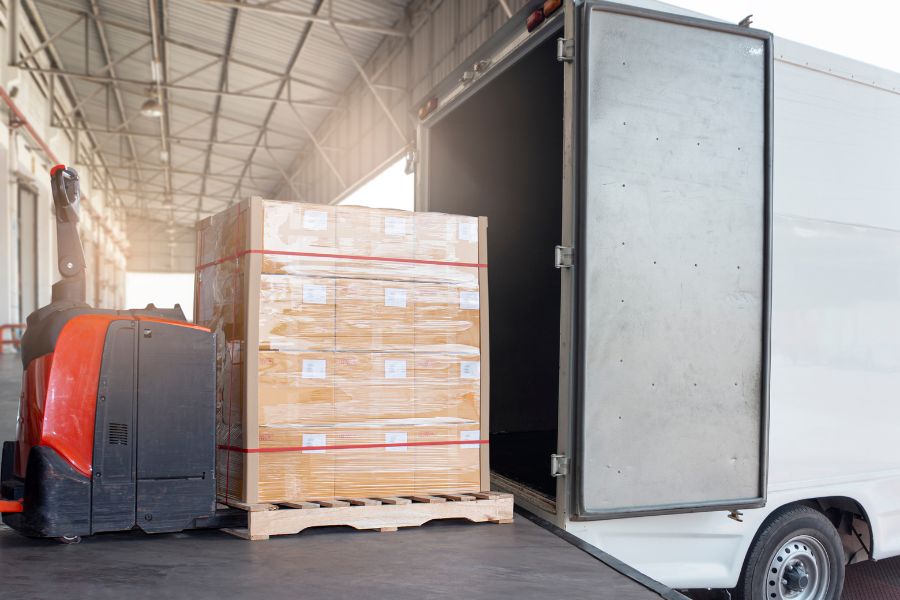Types of Packaging: Primary, Secondary & Tertiary

In the manufacturing and packaging world, there are three primary types of packaging that companies can use to package, store, and ship their products. These types of packaging, known as primary, secondary, and tertiary, play a crucial role in ensuring the safe delivery of your products and the overall efficiency of your shipping processes. Let’s delve into the characteristics and considerations associated with each type of packaging to help you make an informed choice for your business.
Importance of Packaging in the Supply Chain
Packaging is the only way to effectively transport a product from the manufacturer to the consumer. It not only provides a protective barrier to safeguard the product during shipping, but it also functions as a marketing tool by showcasing the product’s features. Multiple layers of packaging protect the product and help ensure it arrives at its destination safely and intact, minimizing the risk of damage.
What Are the Different Types of Packaging?
Packaging can be categorized based on the different types of packaging materials used or its intended purpose. A variety of materials are used in packaging, including glass, plastic, cardboard, and wood. On the other hand, packaging can also be classified based on its function, known as primary, secondary, and tertiary, which we’ll cover in the next section.

Primary Packaging: Protecting the Product Directly
Packaging that directly protects or houses the product is known as primary packaging. This is the main layer between the consumer and the product, and oftentimes primary packaging houses the product while it is in use.
What Is Primary Packaging?
Primary packaging is any packaging that is in direct contact with the product. This type of packaging preserves, contains, and protects the product. Primary packaging is also where you would find labels with important information for the consumer, such as the ingredients or any toxicity warnings.
Primary Packaging Examples
Several components of a product’s packaging can be considered primary packaging. For example, a cosmetic lotion is housed in a bottle, and it also contains a label and lid. All three components, the bottle, label, and lid, are considered primary packaging.
The packaging of a technology product, like a phone that comes packaged in a corrugated fiberboard box, in this case, the cardboard box and all the subsequent components protecting the phone, would be considered the primary packaging. These primary packaging materials are the final barriers between the product and the consumer.
Some other examples of primary packaging include:
- Protective film
- Glass bottles
- Protective plastic bags
- Glass jars
- Metal cans
- Tin cans
- Wrappers
- Skin packs
- Flexible pouches
- Blister packs
- Kraft paper around food items
What Is the Importance of Primary Packaging?
The main purpose of primary packaging is to contain, protect, and provide important information about the product to consumers. It should be designed to fulfill this purpose effectively while emphasizing the visual appeal and brand identity to attract consumers and stand out from the competition.
Primary packaging also plays a vital role in keeping consumable products, such as food and medications, safe from contamination.
Primary Packaging Material Considerations
When discussing primary packaging material considerations, you’re delving into the initial layer of packaging that directly contains and protects the product. This packaging is critical not just for protection but also for information, compliance, and user experience, so the type of material you use will have a significant impact. Here are some top considerations:
Product Compatibility
The chosen material must be compatible with the product to prevent reactions that could degrade the product or the packaging. For instance, acidic products may require specific barrier properties to avoid corroding the package, while food items will require packaging that is deemed safe for consumables.
Protection and Preservation
Primary packaging should effectively shield the product from environmental elements like moisture, oxygen, and light that could cause degradation over time. Additionally, it must offer physical protection against harm brought on by handling and transportation. You’ll want to perform thorough testing to ensure that your packaging is suitable for your products.
Regulatory Compliance
Depending on the industry and the geographical location, there may be regulations governing packaging materials. For food safety and pharmaceutical products, packaging materials need to comply with safety standards set by regulatory bodies like the FDA in the United States or the EMA in Europe. Additionally, many hazardous materials require UN rated packaging to ensure safe handling and transportation.
Sustainability
With increasing awareness of environmental issues, selecting sustainable packaging materials that are recyclable, biodegradable, or derived from renewable resources can be a significant consideration. This aspect not only appeals to eco-conscious consumers but can also help companies meet corporate sustainability goals.
Barrier Properties
Primary packaging material needs to have the appropriate barrier properties to protect the product from various elements, including gases, vapors, and liquids. Different products will have different requirements. For example, perishable goods might need a high barrier to oxygen to extend shelf life.
User Convenience
The ease of use for the end consumer is crucial. This includes considerations like resealability, ease of opening, and the ability to dispense the product efficiently. Ask yourself, will the finished product be easily accessible to the customer, or is the packaging material too hard to open? Packaging that enhances user experience can significantly impact consumer satisfaction. However, if usability is challenging, it can result in lost sales and reflect poorly on your brand.
Cost-Effectiveness
While it’s essential to meet all the product’s protective and regulatory needs, a cost-effective packaging solution is essential. This means considering the material cost, production, and filling process efficiency, and the impact of the packaging design on shipping costs.
Brand Presentation
The primary packaging is often the first point of physical interaction between your finished product and the consumer. It needs to accurately reflect the brand image, attract the customer’s attention, and communicate essential information about the product.
Tamper Evidence
For many products, especially in the food and pharmaceutical sectors, packaging must provide evidence if tampering has occurred. This can be achieved through the use of tamper-evident seals.
Shelf Life Extension
The right packaging materials can help extend a product’s shelf life by protecting against degradation factors. This is particularly important for food products and pharmaceuticals, where the quality and safety of the product over time are essential. Utilizing the right packaging materials can shield these products from external influences, preserving the integrity and quality of the product inside.
Secondary Packaging: Enhancing Protection and Presentation
Secondary packaging secures and organizes individual units of a product. Its main purpose is not to hold the product directly (that’s the role of primary packaging) but rather to safely and efficiently deliver large quantities of product to a retailer or end user. Removing the secondary packaging will not affect the product.

Secondary packaging also unifies the individual products into a cohesive unit for storage or shelf display. For some products, such as medicine bottles that come with an outer box or snack bags that come in a corrugated cardboard box or bigger bag, the secondary packaging contains important messaging for the consumer, like ingredients, brand and product information, labels and certifications such as fair trade, organic, cruelty-free, or others, and company information.
However, secondary packaging is not always seen on retail shelves and is sometimes just a means of delivering bulk products to a single destination.
What Is Secondary Packaging?
As the name implies, secondary packaging is the second layer of packaging for the product, following the primary packaging. This layer of packaging serves multiple purposes, but its main function is to provide additional protection for transporting and storing products. It helps keep bulk products organized and provides an additional layer for branding and marketing by using printed graphics, text, and artwork on the packaging material.
In industries like food, cosmetics, over-the-counter medications, and beverages, secondary packaging is frequently used. It simplifies the processes of unitizing, labeling, and palletizing. Secondary packaging is widely used from both logistically practical and aesthetic perspectives.
Secondary packaging also plays a crucial role in transporting goods from the manufacturer to the retailer or consumer. When not intended to be visible to the end user, it can serve a more utilitarian purpose than aesthetics or marketing. The ideal secondary packaging should provide adequate protection for the product while being easy to open, allowing employees easy access to the product for restocking without causing damage.
Secondary Packaging Examples
Secondary packaging can often be the consumer’s first point of contact with your product. For example, the cardboard box encasing your seltzers so you can easily grab a case and put it in your cart is secondary packaging. Or the box you see on the pharmacy shelf that contains a pill bottle of medicine—that’s also secondary packaging. Secondary packaging makes branding and displaying products easier on retail shelves.
Other types of packaging that can serve as secondary packaging include:
- Pouches
- Plastic bags
- Paper packaging
- Bubble mailers
- Trays
- Cartons
- Paperboard boxes and other paperboard packaging
- Bubble wrap
- Gift packaging
What Are the Functions of Secondary Packaging?
Secondary packaging’s primary function is to provide additional protection for the primary packaging. It also allows retailers to display products more effectively for consumers to buy while serving as another place for brand messaging to be communicated to customers.
Secondary Packaging Solutions: Factors to Consider
When considering the best materials for secondary packaging, here are some factors to consider:
- Printing: Is the material easy to print on to add marketing material and important information to the consumers?
- Durability: Will the material be durable when shipped or handled repeatedly in a retail environment?
- Moisture Resistance: Does the material need to resist moisture?
- Environmental Impact: Can you choose an environmentally-friendly material for this layer of your packaging?
Tertiary Packaging: Ensuring Safe Transportation and Handling
Most products in today’s retail environment have to be shipped at some point in time, and tertiary packaging provides protection of the products for safe shipping and handling.

What Is Tertiary Packaging?
Tertiary packaging includes shipping containers, transit packaging, and boxes used to ship products to retailers or consumers. It is durable and designed to group multiple items into one load for transport. This packaging is usually discarded before a product is shown to a customer unless the product ships directly to the customer.
What Is Tertiary Packaging?
Tertiary packaging includes shipping containers, transit packaging, and boxes used to ship products to retailers or consumers. It is durable and designed to group multiple items into one load for transport. This packaging is usually discarded before a product is shown to a customer unless the product ships directly to the customer.
Tertiary Packaging Examples
Anything used in shipping is considered tertiary packaging. Some common packaging materials that are used in tertiary packaging include:
- Corrugated cardboard boxes
- Rigid boxes
- Wood pallets
- Stretch film and shrink film
- Shipping and transit containers
What Are the Functions of Tertiary Packaging?
The primary function of tertiary packaging is holding products during shipping. It provides additional protection of the product by encasing the secondary and primary packaging in the transit process.
Tertiary Packaging Best Practices for Efficiency
The primary materials for tertiary packaging are wood, plastic, and cardboard. There are many factors to consider to help reduce your shipping cost, but the following considerations are a good place to start:
- Weight considerations: Since most shipping involves weighing the product, considering the weight of the packaging will help make the process more affordable.
- Ease of Use: Tertiary packaging needs to be simple to put together, fill, and close for efficient shipping operations.
- Eco-Friendly Materials: Using recyclable materials, like paper-based materials or plant-based materials, allows your brand to lessen your carbon footprint. Choose recycled, natural materials, such as paper pulp, over plastic fill whenever it fits your needs.
- Right-Sized Packaging: Choose tertiary packaging that is properly sized for the products it contains to reduce weight and waste. Remember that this type of packaging comes in all different shapes to properly hold your item.
Determining the Best Packaging Choice
Choosing the right packaging for your products is not always easy to do. So many factors, from legal requirements to branding concepts, influence this decision. There are three main types of packaging: primary, secondary, and tertiary, each with its own set of considerations. To determine the most suitable packaging choice, you’ll want to carefully evaluate these factors:
- Consider the size and weight of your product. Choose a packaging option that will safely house the product while adding the least amount of weight to it as possible.
- Consider the environment where the product will be stored or used, and make sure the packaging will keep the product protected. If you have a high moisture environment, for instance, you will want plastic or glass, not cardboard, to protect the product.
- Consider branding opportunities. Do you need a custom-designed package? Does the need to print on the bottle seem important to you? These questions will all impact the material you choose.
- Consider the product. What risks are present that would harm the integrity of your product? Choose packaging that will protect against this risk.
- Consider consumer needs. Does the consumer need a particular type of product packaging, like accessible containers that are easy to open or eco-friendly materials? These considerations will help you choose the right option.
- Consider shipping choices. How will you ship your product? Will the packaging hold up under this type of shipping, or do you need something more durable?
- Consider your budget. Packaging can come in a wide range of prices, so choose a packaging material that fits your budget while meeting your other needs.
All of these considerations show the important role that packaging plays in both branding and protecting your product for the consumer. In the fast-moving consumer goods market, you can’t afford to make a mistake when choosing packaging.

Leave Your Important Packaging Decisions up to the Experts!
With so many considerations to make when choosing the right packaging materials for your product and its direct impact on the quality of your product, as well as your customer’s view of your brand, this isn’t a decision to take lightly. Working with a team that understands packaging and all of its options is important.
At Paramount Global, we offer complete packaging and supply chain solutions. From providing the best packaging solutions to optimize your budget and goals to creating custom packaging designs that perfectly fit your product and brand identity, our team is here to help you make these important packaging decisions. Contact us today to learn more about our custom packaging options.
Hayley is a marketing professional and copywriter with a background in crafting content for a diverse range of industries. She has been writing about packaging and supply chain logistics for Paramount Global since 2022. She specializes in explaining complex topics in a clear and engaging way and is an advocate for sustainability in packaging and supply chain management.
For over forty years, Paramount has been delivering perfectly integrated packaging and supply chain solutions.
